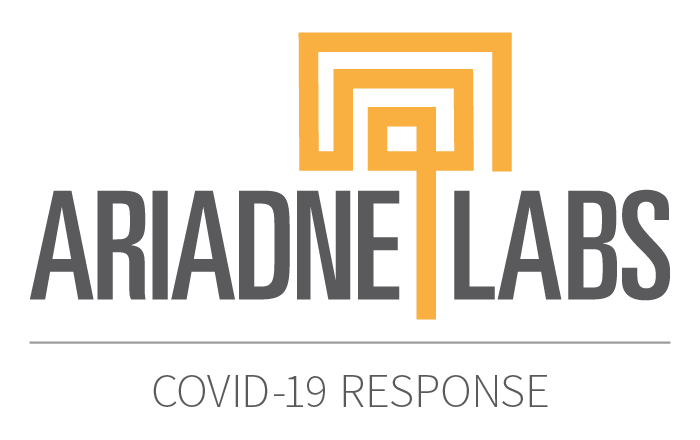Introduction
The most valuable resource in combating COVID-19 are our healthcare providers. Human resource plans are urgently needed to support healthcare systems facing the expected surge in critically ill patients with the potential simultaneous shortfall of healthcare providers due to illness. Contingency plans require stewardship of both material and human resources during this healthcare emergency. Every healthcare provider multiplies our needed healthcare capacity. Ensuring a trained, supported, well-equipped, and healthy workforce will be essential in the ongoing response to the COVID-19 pandemic.
We outline important principles that may help organizations guide the formulation of human resource contingency plans should a surge of critically ill patients occur in your specific institution. Our goal is to assist in decision-making to preserve and gain maximum value from the human resources during these extraordinary times.
Considerations
Redeploying
Inventory the existing workforce
Perform an inventory of the existing workforce. Identify healthcare providers both within and outside of hospital settings whose workload has been reduced due to cancellation of elective procedures, outpatient visits, and reduction of non-COVID-19 hospitalizations. Assess staff capacity to support the care of critically ill patients should a surge occur. Trainees, nurses, physicians, technicians, retirees and other support staff should all be considered to fill anticipated and unanticipated gaps across the healthcare workforce.
Hospitals with training programs need to determine what role their trainees will play, in alignment with trainee regulatory bodies. If trainees will be part of the workforce in the setting of a surge of critically ill patients, hospitals will need to provide clear direction regarding goals and expectations for cross-training, task-shifting, and role transfers for their trainees. Role transfers should recognize trainee seniority, prior training and experience, within a global assessment of the institution’s patient care needs.
The redeployment of healthcare professionals should take into account their set of skills, previous experiences, and capacity to function in new roles in an emergency.
Share human resources
Human resources should be shared among centers to address the burden on centers caring for disproportionately high volumes of critically ill patients.
Leaders of hospitals located in the same city, region, and/or state should plan on meeting regularly through a virtual platform to discuss the status of their human resources and be available to share with each other if the volume of critically ill patients is distributed disproportionately throughout their city, region, and/or state.
Minimize risks to patients and providers
Minimizing legal and clinical risk to patients and providers should be considered in strategic planning.
Credentialing criteria and/or malpractice risk must be addressed to protect healthcare providers who are redeployed to roles and tasks that are not part of their routine responsibilities and, if required, potentially across state or provincial boundaries..
Cross-training and redeployment of staff will need to take into account limiting the risk to healthcare providers and patients. Healthcare providers may be asked to provide care with which they are unfamiliar, and mechanisms must be in place to prevent potential harm to patients and to themselves. All staff who are cross-trained or redeployed should have appropriate support and supervision by expert colleagues who engage in the care of critically ill patients on a regular basis.
Utilize local staff education and resource-sharing platforms
Hospitals need to utilize local staff education and resource-sharing platforms to educate their healthcare providers on principles of taking care of critically ill patients. Educational modules should be rigorously vetted. At minimum, modules should address identifying critically ill patients who may need respiratory support, basic ventilator management, and medical management of critically ill patients in the ICU. Educational modules should be tailored based on the skills and needs of those healthcare professionals needing to be cross-trained.
Share relevant education materials
Organizations, societies, and health systems are strongly encouraged to freely share relevant education materials. All hospital systems should have ready access to high-quality, reliable, and clinically accurate education materials to cross-train and prepare their workforce.
Review care pathways for critically ill patients
Hospitals should review care pathways for critically ill patients (team structure, logistics of rounding, assignment of tasks, etc) and evaluate if scaling this existing approach in the setting of a critical surge of patients will be efficient. If not, institutions should consider how the existing critical care workflow can be modified or adapted in the setting of a critical surge of patients.
Promoting
Facilitate temporary safe promotion
Hospitals should facilitate temporary safe promotion of senior trainees when required. For example, consideration should be given for appropriate clinical fellows to temporarily practice as attending physicians in their field of training in residency. Appropriate senior nursing students and technicians may be appropriate for graded responsibilities within their fields. Any individuals who assume new levels of responsibility should do this with support and supervision.
Preserving
Set consistent safety standards
Consistent safety standards, especially regarding personal protective equipment (PPE) for all healthcare providers is essential to preserve human resources.
Support safety needs and physical and mental well-being
Hospitals should support the safety needs as well as physical and mental well-being of their workforce. Access to single-serving food, access to areas for sleep, freely available wireless internet connection, and phone chargers may relieve immediate physical and mental stressors. Maintenance of morale through equal access to resources appropriate to role and time spent in the hospital is essential. The well-being of the healthcare workforce will be threatened by the demands placed on them to learn new skills under pressure, work outside of their usual roles, and bear the burden of enormous patient volume. These concerns will add to the stress of potential COVID-19 transmission, and also the impact of the COVID-19 crisis on themselves and their families. Fatigue and stress diminish cognition, communication and teamwork, which is both an additional stress for providers and an added risk for patients.
Address concerns of frontline healthcare providers
Leaders in healthcare should be proactive in addressing the concerns of the frontline healthcare providers. These include increasing COVID-19 testing capacity and ensuring a reliable supply of necessary PPE. Failing to address these concerns will negatively affect the health and well-being of healthcare providers and teamwork functioning.
Protect the workforce
The workforce should be protected, when possible, through rotating shorter duty cycles, limiting unnecessary in-hospital work, utilizing tele-rounding, and formulating evidence-based return to work policies. This strategy may decrease transmission among colleagues, as well as allow staff to remain physically healthy. Back-up teams should be on stand-by to address situations when entire teams may be placed in self-quarantine due to exposure and/or infection of members with COVID-19. Healthcare systems should play a role in unburdening staff through provision of emergency childcare. Designing staff quarantine and isolation protocols that effectively address disease transmission and also recognize the impact on families will be essential. Hospitals should also formulate return to work policies that are informed by national guidelines and the disposition, mental well-being, and exposure risk of their healthcare professionals.
Summary
The current COVID-19 crisis is threatening healthcare systems’ ability to provide appropriate, reliable, and timely care to patients in need. Healthcare systems around the world will need to strategically plan how to redeploy and preserve their human resource safely, rapidly, and efficiently. Risk-mitigation, cross-training, and anticipating and addressing the health and well-being of the healthcare workforce will be essential topics that the leadership of healthcare systems will need to critically address when preparing to meet the demands of potential surges of critically ill patients that will stress individuals, families and systems in unprecedented ways.
George Molina (1,2,4), Alexander Hannenberg (1,3), Rachel Smith (1), Joaquim Havens (1,4), Thomas Stelfox (5), Eddy Lang (6), Laura V. Duncan (7); Susan Haas (1), Jason Pradarelli (1,4), Nikhil Panda (1,2), Yves Sonnay (1), Christy Cauley (1,2), Evan Benjamin (1), Mary E. Brindle (1,8)
- Ariadne Labs, Brigham and Women’s Hospital, Harvard T.H. Chan School of Public Health, Boston, MA
- Department of Surgery, Massachusetts General Hospital, Boston MA
- Tufts University, Boston, MA
- Department of Surgery, Brigham and Women’s Hospital, Boston, MA
- Department of Critical Care Medicine, University of Calgary and Alberta Health Services and O’Brien Institute for Public Health, University of Calgary, Calgary, AB
- Department of Emergency Medicine, University of Calgary and Alberta Health Services, Calgary, AB
- Department of Anesthesiology and Pain Medicine, University of Ottawa, Ottawa ON
- Department of Surgery, University of Calgary and Alberta Health Services, Calgary, AB


